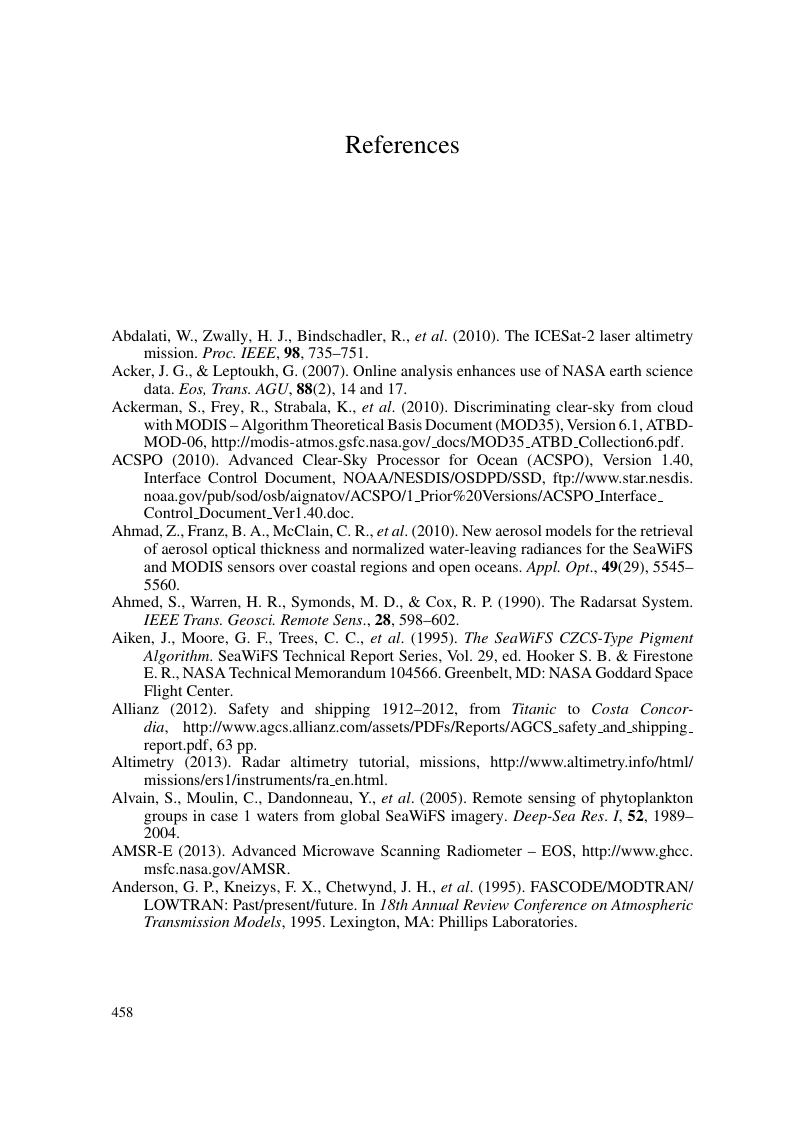Book contents
- Frontmatter
- Contents
- Preface
- List of chemical symbols
- List of mathematical symbols
- List of abbreviations and acronyms
- 1 Background
- 2 Ocean surface phenomena
- 3 Electromagnetic radiation
- 4 Atmospheric properties and radiative transfer
- 5 Reflection, transmission and absorption at the atmosphere/ocean interface
- 6 Ocean color
- 7 Infrared observations of sea surface temperature (SST)
- 8 Introduction to microwave imagers
- 9 Passive microwave observations of the atmosphere and ocean surface
- 10 Introduction to radars
- 11 Scatterometers
- 12 The altimeter
- 13 Imaging radars
- 14 Other instruments: the gravity missions, ICESat-1 and -2, CryoSat-2, SMOS and Aquarius/SAC-D
- Appendix
- References
- Index
- Plate Section
- References
References
Published online by Cambridge University Press: 05 June 2014
- Frontmatter
- Contents
- Preface
- List of chemical symbols
- List of mathematical symbols
- List of abbreviations and acronyms
- 1 Background
- 2 Ocean surface phenomena
- 3 Electromagnetic radiation
- 4 Atmospheric properties and radiative transfer
- 5 Reflection, transmission and absorption at the atmosphere/ocean interface
- 6 Ocean color
- 7 Infrared observations of sea surface temperature (SST)
- 8 Introduction to microwave imagers
- 9 Passive microwave observations of the atmosphere and ocean surface
- 10 Introduction to radars
- 11 Scatterometers
- 12 The altimeter
- 13 Imaging radars
- 14 Other instruments: the gravity missions, ICESat-1 and -2, CryoSat-2, SMOS and Aquarius/SAC-D
- Appendix
- References
- Index
- Plate Section
- References
Summary

- Type
- Chapter
- Information
- An Introduction to Ocean Remote Sensing , pp. 458 - 488Publisher: Cambridge University PressPrint publication year: 2014

